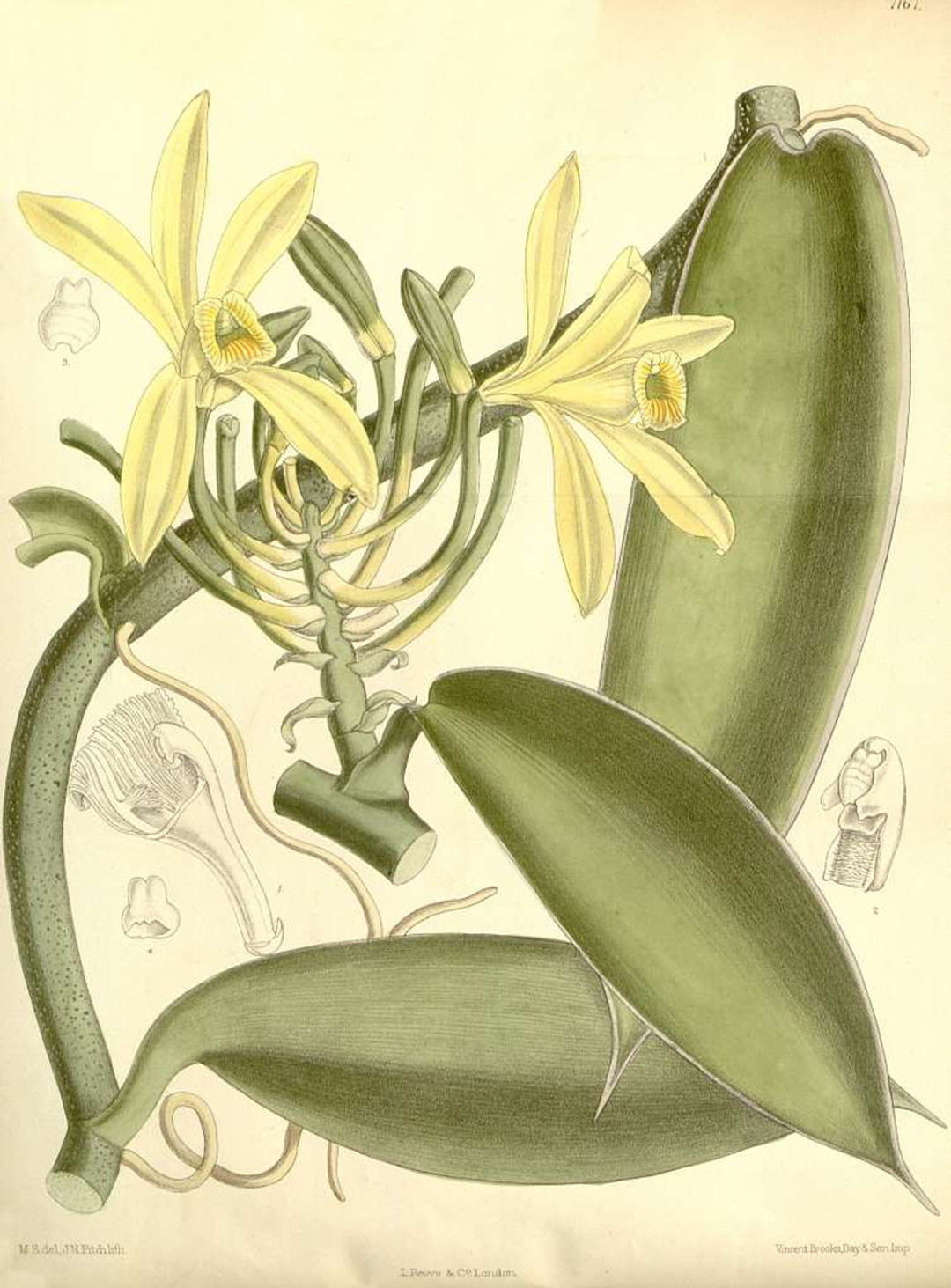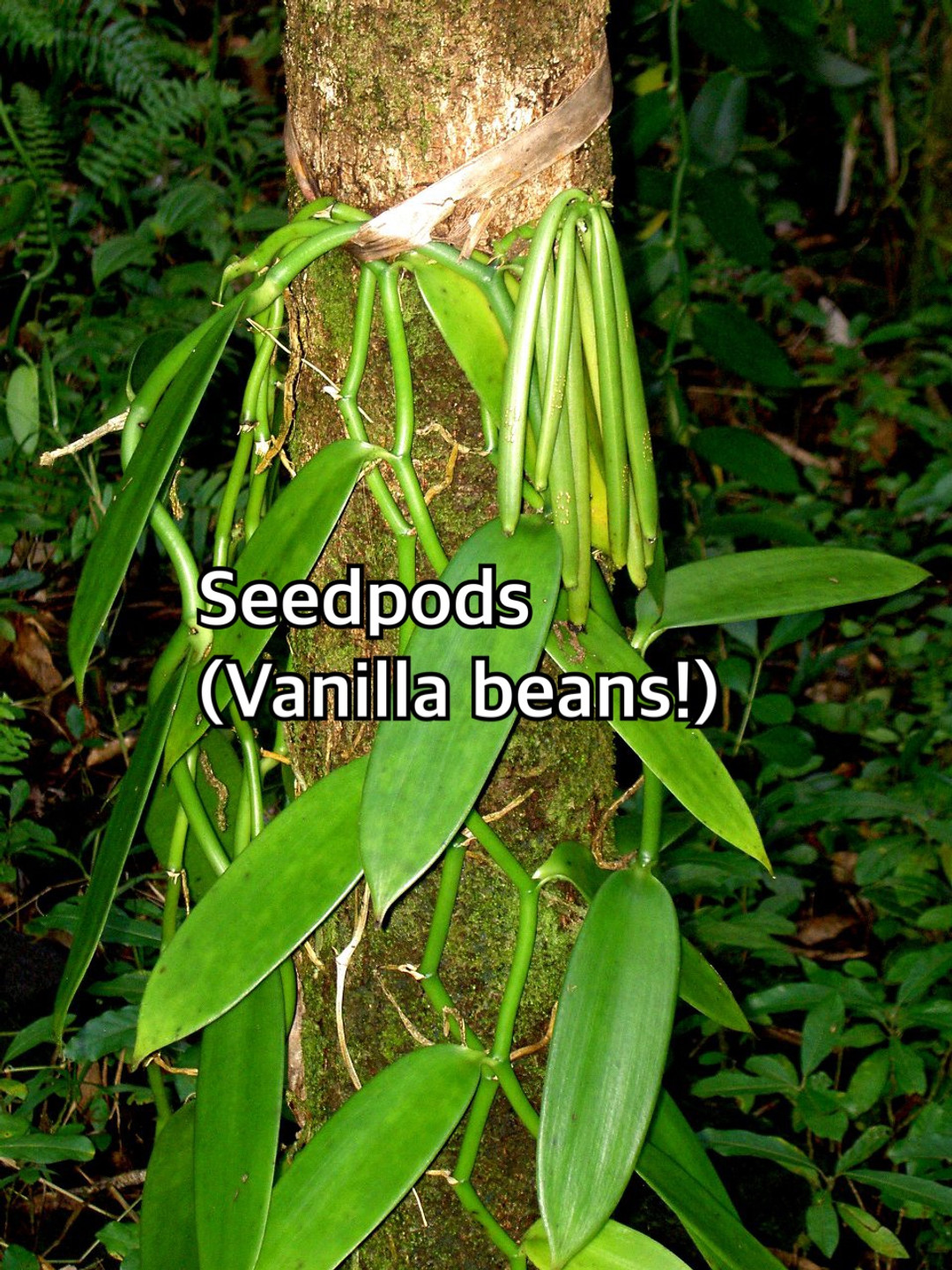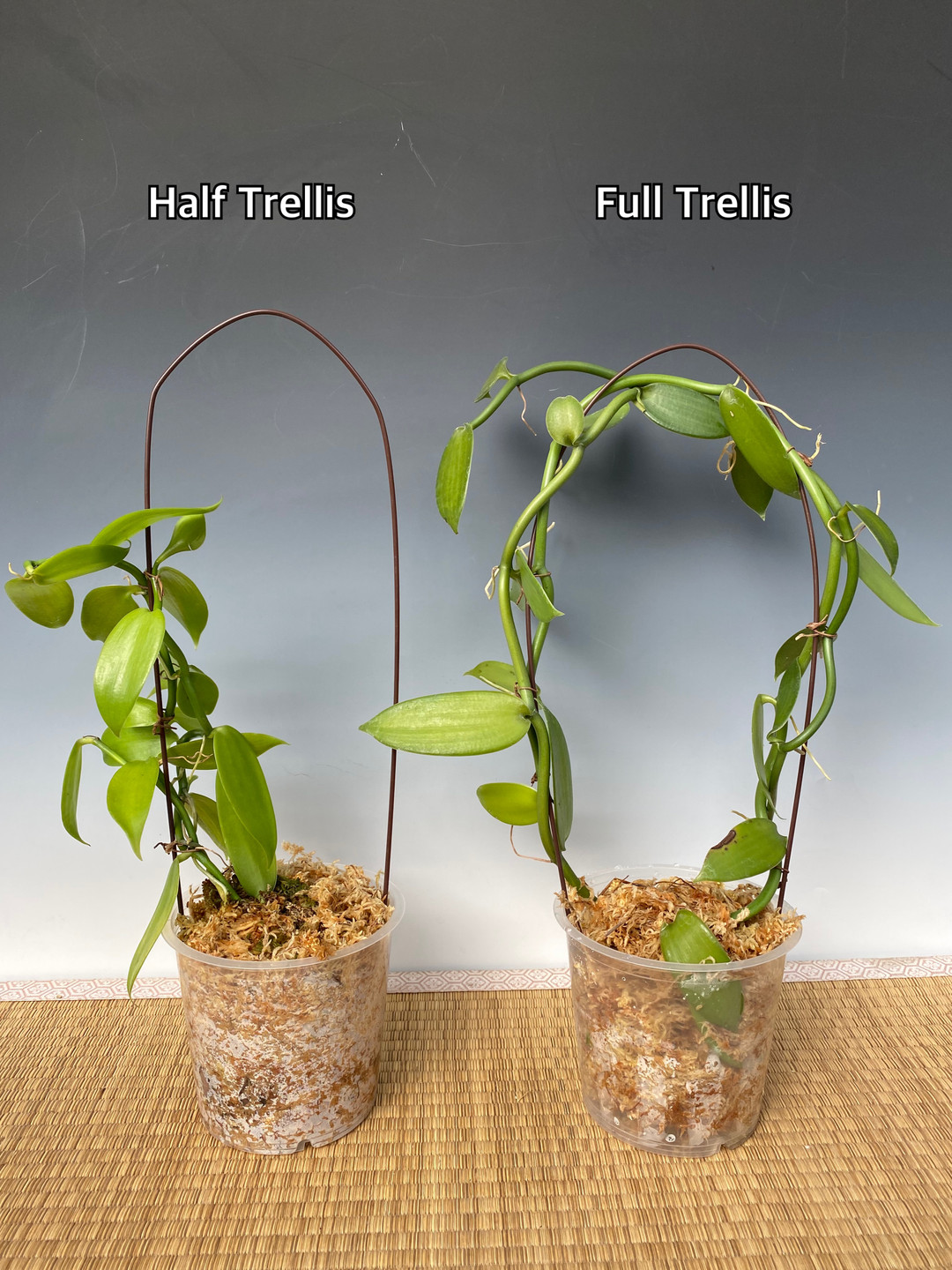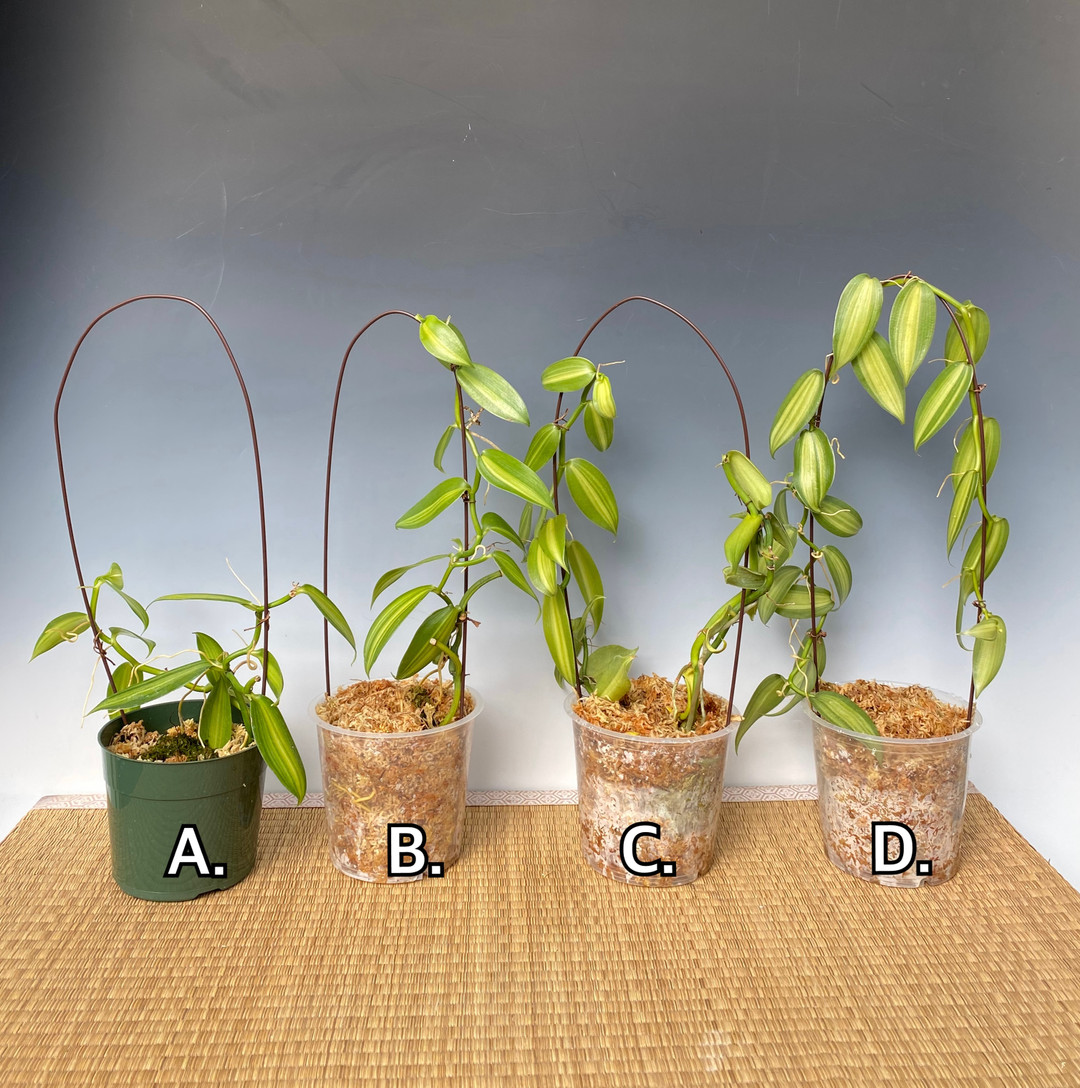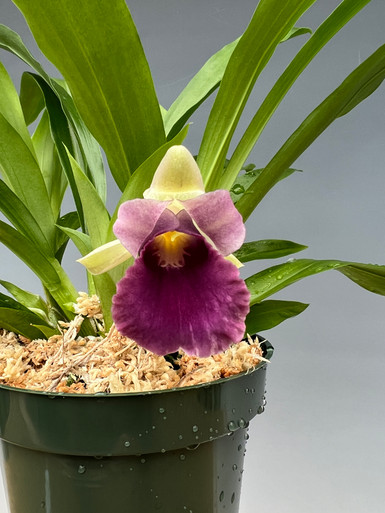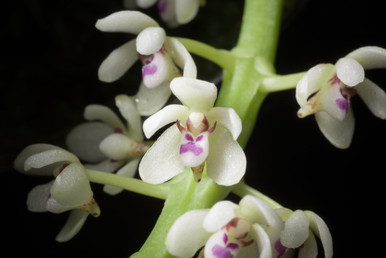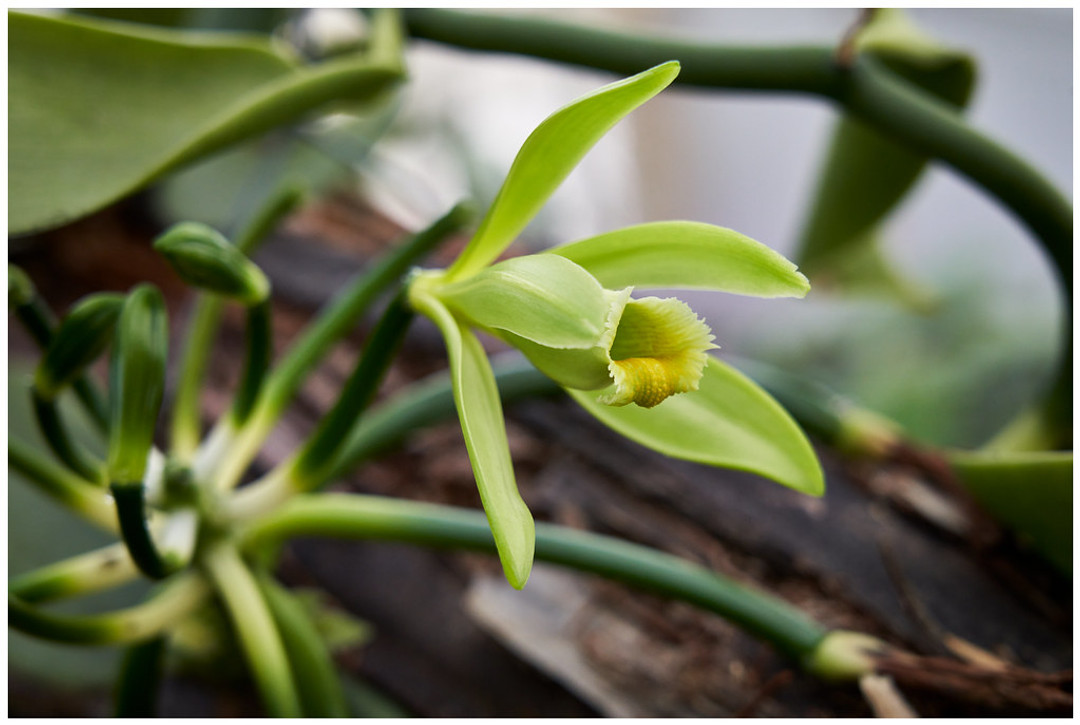
Vanilla planifolia
SKU:13201
Available OptionsWhat does in-spike mean?
A. 5.5" Pot - Varigated
$45
Not In-Spike
B. 5.5" Pot - Varigated
$45
Not In-Spike
5.5" Pot - Half Trellis
$45
Not In-Spike
Description
*Varigated plants are individual listings, please see the photos.
Native to Mexico and Central America, Vanilla has been among the world's most important plants - among spices, it is second only to saffron in value. Vanilla's one-of-a-kind culinary qualities owe to the complexity of the numerous chemical compounds inherent in it. The planifolia species is the most commonly used Vanilla in flavoring, and ice cream just wouldn't be the same without it! This plant has different growth habits than other orchids, as it is a vine.
Now you can own this botanically important plant! It is important to state that these plants need to mature to flower, which can take 4+ years from seedling size. The diameter of the vine needs to be about 1/2" thick before it can produce flowers. Sometimes, this occurs when the vine has reached 10+ feet in length! We use a trellis to wrap our large mature plants around, and we have seen Vanilla in Florida growing up and down 100ft tall palm trees!
Vanilla roots will grab onto and curl around anything they touch, especially if you have good humidity. They are intermediate to hot-growing and develop rapidly in a peat or sphagnum moss-based mix. Allow the medium to just approach dryness, but don't allow it to dry out completely. Provide high light, and fertilize as you would any other orchid, more frequently in the warm seasons.
Lastly, when you finally can flower your Vanilla, the flowers last one day, but can blossom more than once from the same inflorescence. To create the Vanilla bean you must hand pollinate the flower, which afterwards will take a few months to mature in size prior to curing. Once cured, they can be placed in alcohol (often people use Vodka, Rum, or Bourbon) for 6 to 12 months to create the extract.
Native to Mexico and Central America, Vanilla has been among the world's most important plants - among spices, it is second only to saffron in value. Vanilla's one-of-a-kind culinary qualities owe to the complexity of the numerous chemical compounds inherent in it. The planifolia species is the most commonly used Vanilla in flavoring, and ice cream just wouldn't be the same without it! This plant has different growth habits than other orchids, as it is a vine.
Now you can own this botanically important plant! It is important to state that these plants need to mature to flower, which can take 4+ years from seedling size. The diameter of the vine needs to be about 1/2" thick before it can produce flowers. Sometimes, this occurs when the vine has reached 10+ feet in length! We use a trellis to wrap our large mature plants around, and we have seen Vanilla in Florida growing up and down 100ft tall palm trees!
Vanilla roots will grab onto and curl around anything they touch, especially if you have good humidity. They are intermediate to hot-growing and develop rapidly in a peat or sphagnum moss-based mix. Allow the medium to just approach dryness, but don't allow it to dry out completely. Provide high light, and fertilize as you would any other orchid, more frequently in the warm seasons.
Lastly, when you finally can flower your Vanilla, the flowers last one day, but can blossom more than once from the same inflorescence. To create the Vanilla bean you must hand pollinate the flower, which afterwards will take a few months to mature in size prior to curing. Once cured, they can be placed in alcohol (often people use Vodka, Rum, or Bourbon) for 6 to 12 months to create the extract.
Attributes
Temperature
Intermediate-Warm
Bloom Season
Varies
Fragrant
Yes
Light Level
Medium-High
Color(s)
White, Yellow
